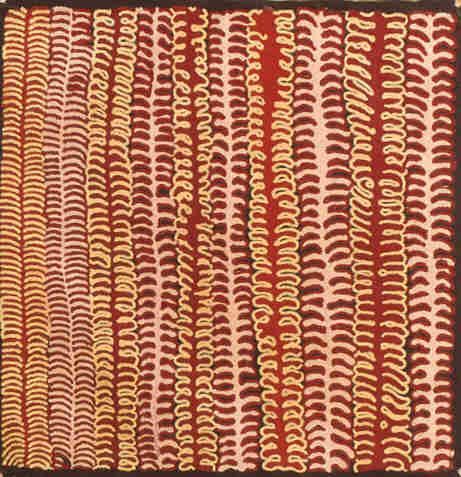Bush Medicine Leaf Dreaming by Abie Loy Kemarre, 92x92cm
"Bush Medicine" by Abie Loy Kemarre intricately depicts the leaf of the antywerleny (Acacia tenuissima), a type of wattle integral to Aboriginal medicinal practices. The antywerleny leaves are traditionally crushed and mixed with animal fat to create a medicinal ointment or soaked in water for a therapeutic wash. Abie emphasizes that this bush medicine remains in use today by her community.
In her words, "Ikwerthey anter-anem thelem, apernelheyew-anem antywerlenyel" translates to "Then you pour the fat into it and rub yourself with the antywerleny." This painting captures the dynamic essence of the leaves employed in healing rituals. The knowledge of these medicinal plants, preserved through ceremonies and song cycles, transforms the seemingly harsh desert landscape into a rich source of sustenance and healing.
With the special medicinal leaves which is closely associated with women, academic Christine Nicholls describes, " ... a shape-shifter, a state-changer, possessing the ability to transform herself from her bush leaf-form into a woman and back into a leaf again. The aspect of the Bush Leaf Dreaming that Abie paints belongs to women only. The accompanying 'dreaming narrative contains a bush leaf is painfully shy. When people touch the leaves or pick this leaf she dies of embarrassment, because of the shame of being touched. Yet magically, although the leaf withers under the gaze and touch of people who covet the leaves of this plant, she has the capacity to regenerate herself and brings herself back to life after" (Nicholls 2010: 53)

